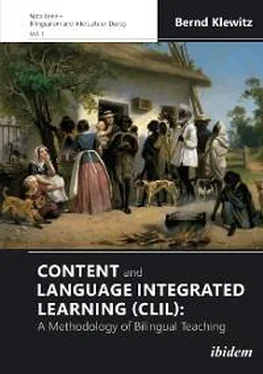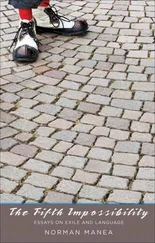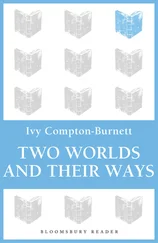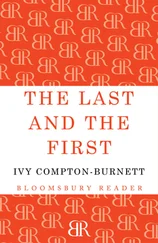3.2 Linking Nature and Nurture
In effect, Vroman’s FDH was able to create a link between the nativist (UG-) position in primary language acquisition and the idea that L2 learning was predominantly influenced by external factors and “ nurtured ” by educational and societal settings rather than by an innate language “ endowment ”. This, however, does not completely answer the question how children and adolescents learn to develop their language(s), which boils down to the controversy whether language acquisition is enabled by this “ endowment ”, the language acquisition faculty, or a result of environmental influences—in other words facilitated by nature or nurture.
According to Chomsky, language acquisition has a biological foundation which would be backed up by the following considerations: sounds are acquired in a certain sequence and are common to all world languages. The Guidebook for Bilingual Parentsdocuments identical developmental phases for all children from the discrimination of sounds, a focus on language properties, different reactions to function and property words and—after two years—a rapid increase in the number of lexical items acquired (Meisel: 37 ff). These processes would occur in all world languages and confirm the existence of an innate mental structure, the domain-specific mechanism of UG.
In contrast to that, behaviorist theory had proposed that a child’s environment was the most important factor in language learning and would include, even be based on imitation, a clear-cut nurture position. Whereas imitation certainly plays a limited role even in second language acquisition, learners do not imitate everything they hear and are selective in what they produce; this could be taken as a hint at an “internal language-monitoring process” (Lanir 2019: n.p.) rather than the nurture aspect of environmental conditioning. Further aspects that cannot be explained by the process of imitation are overgeneralizations like goed, putted, mouses and sheeps (in inflection) and non-existent language structures that children never heard. Language chunks acquired through imitation become locked in a child’s memory and are not assimilated in their language production and thus dysfunctional. At the same time, children produce many more sounds and combinations than they hear and understand much more than they can produce—this phenomenon is also known as Poverty of Stimulus (POS—cf. Riemer: 277). Overall, they are exposed to language performance instead of competence and can even extract linguistic rules from incomplete or faulty language they listen to (cf. ibid.).
These aspects come across as a critical view of behaviorist language theory and an appreciation of the innate position of a UG and domain-specific mental modules. And indeed, despite all recent rejection of Chomsky’s propositions—including his own revocation of UG and resort to paradigms like recursion (cf. Everett 2017)—a study of psychologists claims to have found new support for Chomsky’s “internal grammar” theory:
One of the foundational elements of Chomsky’s work is that we have a grammar in our head, which underlies our processing of language,” explains David Poeppel, the study’s senior researcher and a professor in New York University’s Department of Psychology. “Our neurophysiological findings support this theory: we make sense of strings of words because our brains combine words into constituents in a hierarchical manner—a process that reflects an ‘internal grammar’ mechanism (NYU: 2015 n.p.).
On the other hand, and conceding that a universal grammar is not impossible in principle, linguists like Daniel Everett do not see much evidence for it and maintain that it would not work in any case. In his view, a complex interplay of factors structures the way humans talk and what they talk about. In that he is supported by developmental psychologists, and Michael Tomasello (2008), for instance, agrees that grammatical principles and constructions have no neural foundation but stem from more general cognitive processes and are part of communication in particular linguistic communities, although aspects of language competence might have evolved biologically. Everett, in his book Language: The Cultural Tool (2012), argues that the rules of language are “ not innate but spring from necessity and circumstance ”:
Language is possible due to a number of cognitive and physical characteristics that are unique to humans but none of which that are unique to language. Coming together they make language possible. But the fundamental building block of language is community. Humans are a social species more than any other, and in order to build a community, which for some reason humans have to do in order to live, we have to solve the communication problem. Language is the tool that was invented to solve that problem. … The lesson is that language is not something mysterious that is outside the bounds of natural selection, or just popped into being through some mutated gene. But that language is a human invention to solve a human problem. Other creatures can't use it for the same reason they can't use a shovel: it was invented by humans, for humans and its success is judged by humans (Everett: 2012 n.p.).
3.3 Anthropology Sheds a New Light
Beyond the linguistic nativist-versus-learningdebate, related fields in psychology (Pinker) and literature (Caliban/Ortega) have quite intensely mirrored the nature-versus-nurturecontroversy, which has a long history reaching even back to the beginnings of anthropology (Boas) in the late 19th century. Building blocks of this controversy will be helpful to consider in some detail because an integrative CLIL methodology not only needs to connect language and content, but also has to specify the various aspect of subject matters to establish content, which in addition to natural and social sciences also encompasses literature and cultural studies as key components. Therefore, it is essential to draw on some examples of how the nature/nurture debate has been documented in these CLIL related domainsand which conclusions can be drawn for effective learning and successful teaching strategies in either focusing on the nature of (language) acquisition processes or tenets of Visible Learning trying to nurture content learning based on the three foundations of competence development, i.e. knowledge, skills and volition. 2
A German expatriate like Franz Boas (1858-1942) is not commonly associated with developing linguistic theories or participating in discussing issues of whether acquired traits of character can be inherited. But he was one of the first scientists to refute the view that intelligence was innate and the assumption of “ primitive races ” justified, prevailing at his time. Boas emigrated to the United States and later earned the attribution of a Father of American Anthropology. A professor at the Columbia University in New York since 1899, Boas spent a lifetime, both in the US and Europe, to fight against the racist side of biological determinism. As a proponent of “ cultural relativism ” he argued that cultures cannot be ranked as higher or lower and that all humans see the world through the lens of their own cultural perspective. At the turn of the century (19 to 20) it was a difficult stance to take in the light of Darwin’s theory of evolution and Mendelson’s laws of dominant and recessive genes which spread the news that “ acquired traits cannot under any circumstances be inherited; that is, our genetic material is sealed off from everything we learn ” (Roth Pierpont: 2004 n.p.).
Together with his students, among them Margaret Mead, whose bestseller Coming of Age in Samoa (1928) “ turned the American culture upside down ” (ibid.), his research and academic work clearly went against mainstream psychology; Boas did not believe in turning heredity against culture but he believed that each person should only be judged as an individual and was malleable by cultural influences:
Читать дальше












